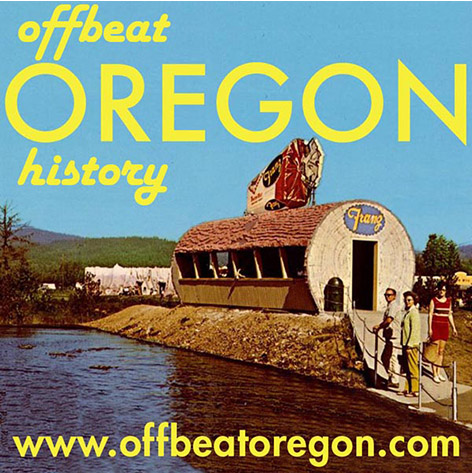MILWAUKIE, CLACKAMAS COUNTY; 1840s, 1850s, 1860s:
Bing cherry has its roots on the Oregon Trail
No audio (podcast) version is available at this time.
By Finn J.D. John
|

He's also somewhat famous, or notorious perhaps, for an episode much later in his life when he tried to found a free-love cult in Honduras. But that, as podcast host Marcus Axford of the Welcome to Oregon podcastlikes to say, is a story for another day (here's a link to the Offbeat Oregon article about it, though).
When Henderson’s brother Seth arrived on the trail with brother John, he joined the family operation and basically took over the Milwaukie operations while Henderson traveled south to establish a nursery and orchards in the fast-growing San Francisco Bay area — by this time, of course, the Gold Rush had started. This would become the Oakland suburb of Fruitvale. It is primarily Seth who we have to thank for the Bing cherry. Seth first cultivated a rich, deep black cultivar that he named the Black Republican. (This, by the way, is one of the most popular varieties used in high-end black cherry ice creams.) Seth, who shared Henderson’s enthusiasm for Abolition, named the cherry after the slur he often heard from pro-slavery neighbors wishing to insult him. He joked that he was going to make them relish a Black Republican whether they wanted to or not, and yeah, that probably worked! For what it’s worth, it’s my personal favorite kind of cherry. Seth then crossed the Black Republican with the Royal Anne cultivar to create the famous Bing, which he named after his six-foot-tall Manchurian Chinese orchard foreman, Ah Bing. “It’s a big cherry, and Bing’s big, and anyway it’s in his row,” Seth said, according to his stepdaughter’s oral-history interview with WPA Folklore Project writer Sara B. Wrenn. “So that shall be its name.” (Ah Bing, by the way, deserves to be better known. How much he had to do with the development of the Bing is unknown, but it was probably significant. Unfortunately, after spending most of his life in Oregon cultivating the state’s best fruit, he made the mistake of traveling back to the Old Country to visit family, and was blocked from returning home to Oregon by the Chinese Exclusion Act, which passed while he was abroad.) Besides the cherries, Seth and John developed the Golden Prune, the Sweet Alice apple, some improved rhubarbs and grapes, and a number of other fruits bearing the family name. Other later events hinged on the Luellings’ success as well. Fellow Quaker John Minthorn’s Oregon Land Company, 40 years later, made a specialty of developing orchards to sell — a business plan obviously dependent on the tradition the Luellings imported. Without the Oregon Land Company, Minthorn’s teenage nephew, Herbert Hoover, would likely not have gotten the early training in sound business practices that was to be so important in his early career as an engineer. Hoover, of course, would go on to become the greatest enemy of the Third Horseman of the Apocalypse (famine) in the history of the world, with the possible exception of “Green Revolution” architect Norman Borlaug. But Herbert Hoover’s journey, again, is a story for another day (here is a link to the Offbeat Oregon article about it, though). By the way, the story of the Luellings’ journey is the basis for Deborah Hopkinson’s children’s book, “Apples to Oregon,” one of the Oregon Reads book selections for the 2009 Oregon sesquicentennial celebration. The book springboards off the story to generate a “tall tale” about the journey with the tree wagon.
|


